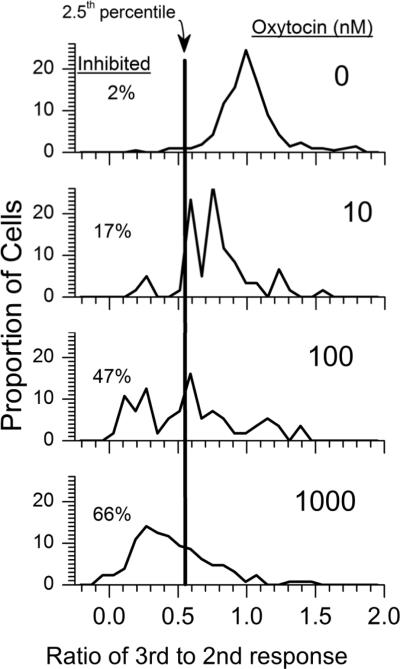Fig.3.
(A) Change in Fura-2 fluorescence ratio at third baseline (B3) after vehicle or oxytocin, 100 nM alone or in the presence of antagonists compared to preceding baseline (B2). Atosiban and oxytocin- and arginine vasopressin (AVP)-V1a receptor-selective antagonists produced concentration-dependent inhibitions of the effect of oxytocin. The oxytocin receptor-selective antagonist blocked the effect of oxytocin at a lower concentration and more effectively than the AVP-V1a receptor selective antagonist. Values represent mean of 50–62 cells. *P < 0.05 compared to oxytocin, 100 nM alone. (B) Fura-2 fluorescence ratio at third KCl stimulus (S3) after vehicle or oxytocin, 100 nM alone or in the presence of antagonists divided by that of the preceding KCl stimulus (S2) before experimental treatment. Atosiban and oxytocin- and AVP-V1a receptor-selective antagonists produced concentration-dependent inhibitions of the effect of oxytocin. The oxytocin receptor-selective antagonist blocked the effect of oxytocin at a lower concentration and more effectively than the AVP-V1a receptor-selective antagonist. Values represent mean of 50–62 cells. *P < 0.05 compared to oxytocin, 100 nM alone.

